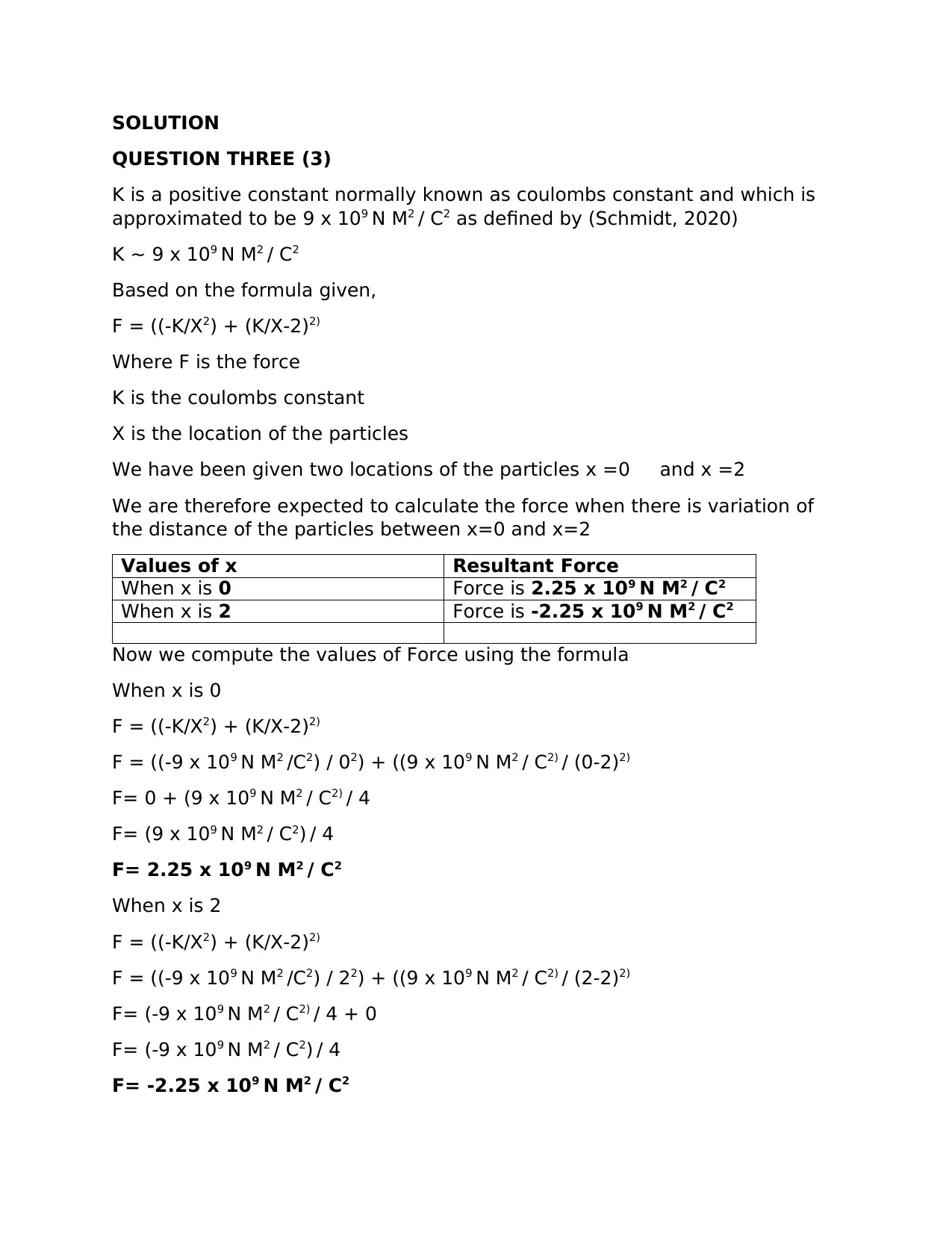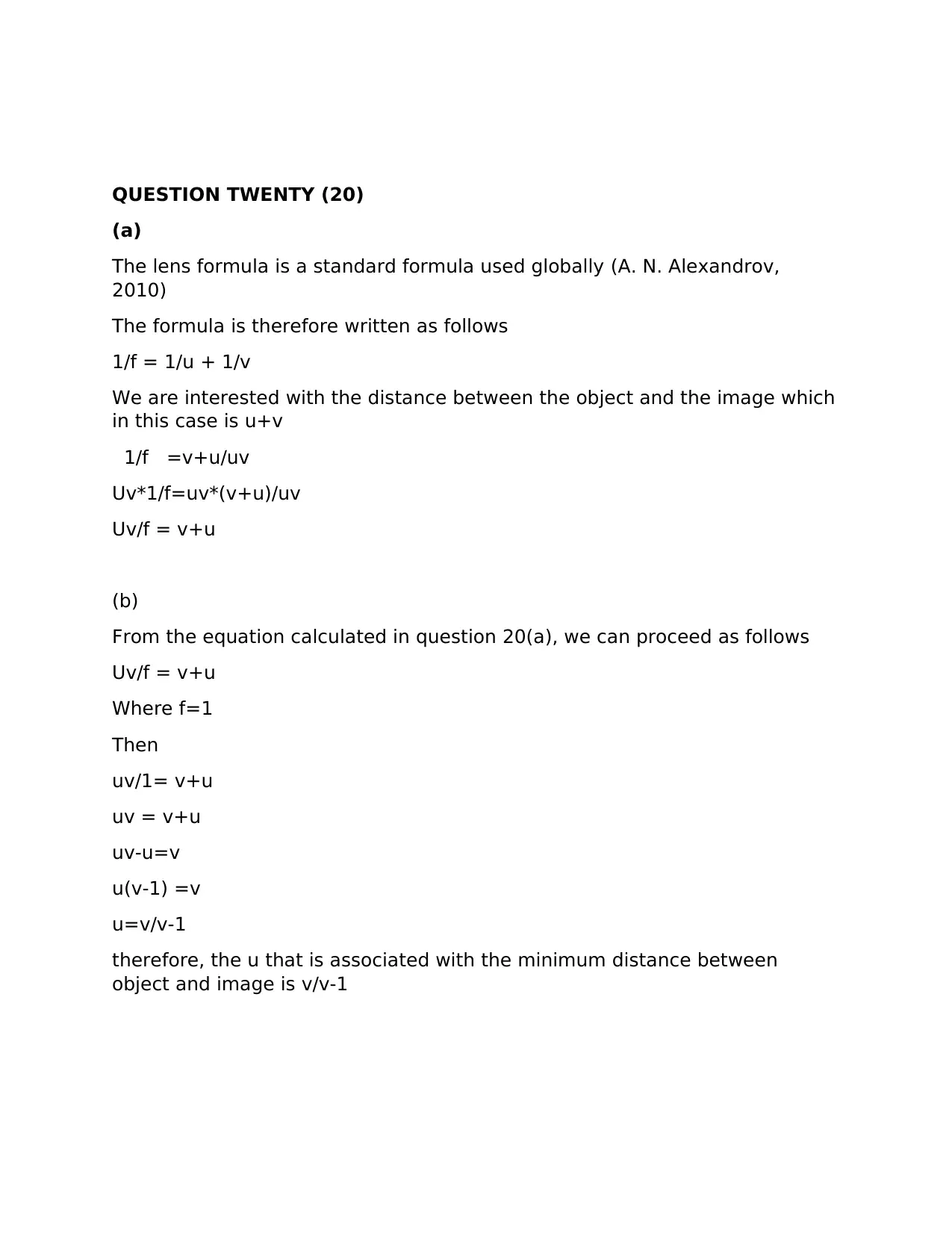Physics Homework: Coulomb's Law, Lens Formula, and Force Analysis
VerifiedAdded on 2022/09/12
|4
|732
|38
Homework Assignment
AI Summary
This physics assignment provides solutions to two problems. The first problem focuses on calculating the resultant force based on Coulomb's law, considering variations in the distance between charged particles. The solution includes calculations for different particle locations and a graphical representation of the force. The assignment highlights the relationship between distance and force, with references to supporting research. The second problem addresses the lens formula, deriving a formula for the distance between an object and its image. The solution manipulates the lens formula to find an expression for 'u' associated with the minimum distance between object and image. The assignment demonstrates problem-solving skills in physics, using formulas and calculations to analyze physical phenomena.
1 out of 4










![[object Object]](/_next/static/media/star-bottom.7253800d.svg)